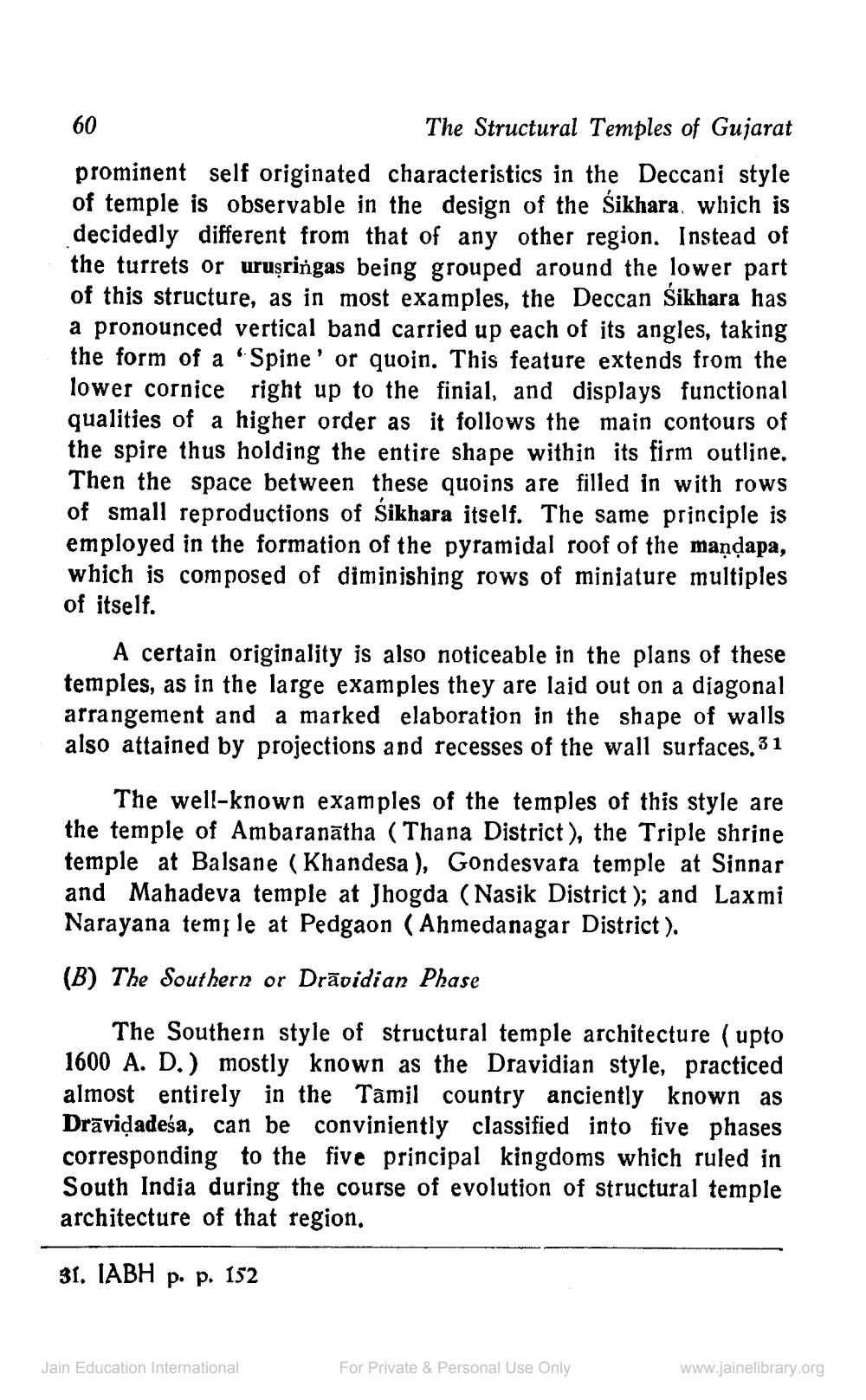________________
60
The Structural Temples of Gujarat prominent self originated characteristics in the Deccani style of temple is observable in the design of the Sikhara, which is decidedly different from that of any other region. Instead of the turrets or urușringas being grouped around the lower part of this structure, as in most examples, the Deccan Sikhara has a pronounced vertical band carried up each of its angles, taking the form of a “Spine' or quoin. This feature extends from the lower cornice right up to the finial, and displays functional qualities of a higher order as it follows the main contours of the spire thus holding the entire shape within its firm outline. Then the space between these quoins are filled in with rows of small reproductions of Sikhara itself. The same principle is employed in the formation of the pyramidal roof of the maņdapa, which is composed of diminishing rows of miniature multiples of itself.
A certain originality is also noticeable in the plans of these temples, as in the large examples they are laid out on a diagonal arrangement and a marked elaboration in the shape of walls also attained by projections and recesses of the wall surfaces. 31
The well-known examples of the temples of this style are the temple of Ambaranātha ( Thana District), the Triple shrine temple at Balsane (Khandesa), Gondesvara temple at Sinnar and Mahadeva temple at Jhogda (Nasik District); and Laxmi Narayana temple at Pedgaon (Ahmedanagar District ).
(B) The Southern or Drāvidian Phase
The Southern style of structural temple architecture ( upto 1600 A. D.) mostly known as the Dravidian style, practiced almost entirely in the Tamil country anciently known as Drāvidadeśa, can be conviniently classified into five phases corresponding to the five principal kingdoms which ruled in South India during the course of evolution of structural temple architecture of that region.
31. IABH p. p. 152
Jain Education International
For Private & Personal Use Only
www.jainelibrary.org




